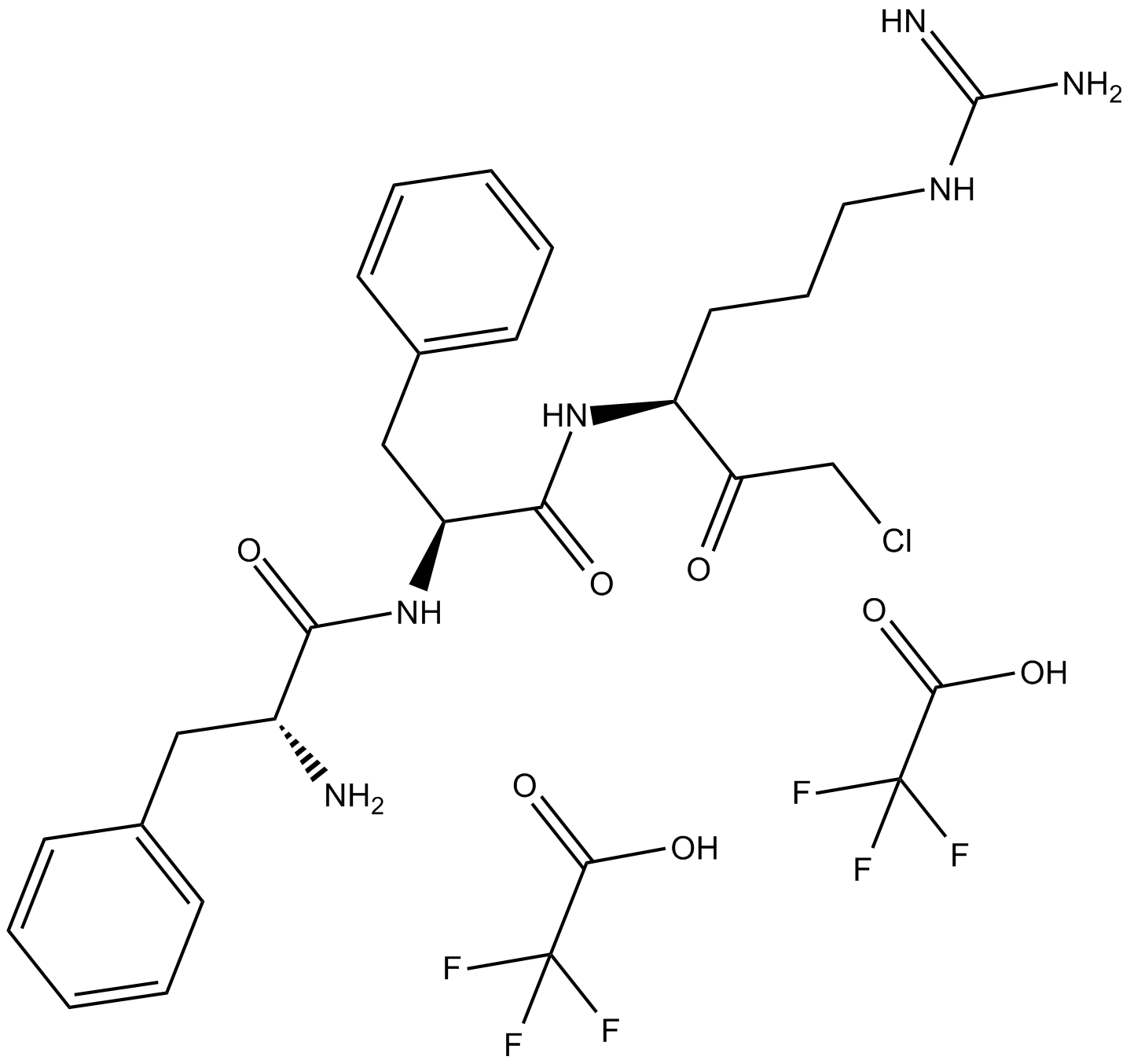PPACKII (trifluoroacetate salt) (Synonyms: H-D-Phe-Phe-Arg-Chloromethyl Ketone) |
| Katalog-Nr.GC17711 |
glandular and plasma kallikreins inhibitor
Products are for research use only. Not for human use. We do not sell to patients.

Cas No.: 649748-23-2
Sample solution is provided at 25 µL, 10mM.
PPACKII is a specific and irreversible inhibitor of glandular and plasma kallikreins [1].
Human tissue kallikreins (hKs) are a class of secreted serine proteases that involved in the release of vasodepressor peptides or kinins from a plasma substrate. Kallikrein has diverse expression patterns and physiological roles. Kallikrein has been primarily known as cancer biomarkers. Kallikrein has been implicated in many cancer-related processes, such as cell-growth regulation, angiogenesis, invasion and metastasis. Kallikrein could promote or inhibit neoplastic progression individually and/or with the interaction in cascades with other hKs and proteases [2].
PPACKII prevented apolipoprotein proteolysis in dextran sulfate-precipitated human plasma LDL and inhibited serum atrial natriuretic peptide cleavage at micromolar concentrations [1]. It has been reported that PPACKII inactivated the amidolytic activity of native human Hageman Factor (Factor XII) at 5.3 μM [3].
References:
[1]. Byrne R E, Scanu A M. Apolipoprotein B-100 of plasma low density lipoproteins undergoes proteolysis by contact activation factors when plasma is treated with dextran sulfate-500-MgCl2[J]. Journal of lipid research, 1989, 30(1): 109-120.
[2]. Borgoo C A, Diamandis E P. The emerging roles of human tissue kallikreins in cancer[J]. Nature Reviews Cancer, 2004, 4(11): 876-890.
[3]. Silverberg M, Kaplan A P. Enzymatic activities of activated and zymogen forms of human Hageman factor (factor XII)[J]. Blood, 1982, 60(1): 64-70.
Average Rating: 5 (Based on Reviews and 22 reference(s) in Google Scholar.)
GLPBIO products are for RESEARCH USE ONLY. Please make sure your review or question is research based.
Required fields are marked with *




















